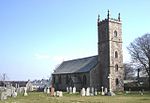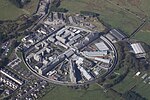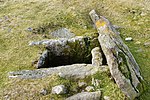Princetown
Princetown is a village located within Dartmoor national park in the English county of Devon. It is the principal settlement of the civil parish of Dartmoor Forest. The village has its origins in 1785, when Sir Thomas Tyrwhitt, then secretary to the Prince of Wales, leased a large area of moorland from the Duchy of Cornwall estate, hoping to convert it into good farmland. He encouraged people to live in the area and suggested that a prison be built there. He called the settlement Princetown after the Prince of Wales. Princetown is the site of Dartmoor Prison. At around 1,430 feet (435 m) above sea level, it is the highest settlement on the moor, and one of the highest in the United Kingdom. It is also the largest settlement located on the high moor. The Princetown Railway, closed in 1956, was also the highest railway line in England: its Princetown terminus was also 1,430 feet above sea level.
Excerpt from the Wikipedia article Princetown (License: CC BY-SA 3.0, Authors).Princetown
Station Road, West Devon Dartmoor Forest
Geographical coordinates (GPS) Address Nearby Places Show on map
Geographical coordinates (GPS)
| Latitude | Longitude |
|---|---|
| N 50.54507 ° | E -3.99422 ° |
Address
Station Road
Station Road
PL20 6QX West Devon, Dartmoor Forest
England, United Kingdom
Open on Google Maps









